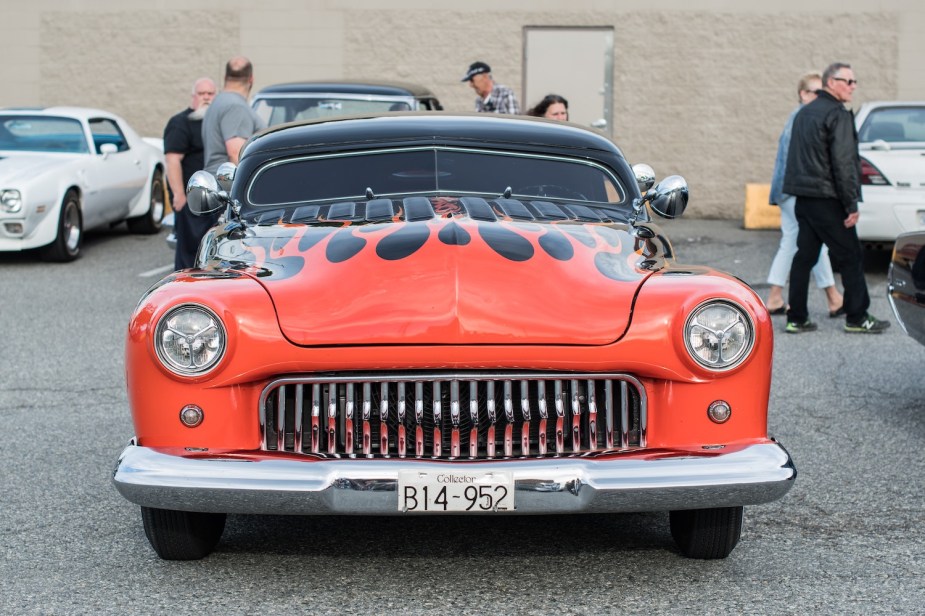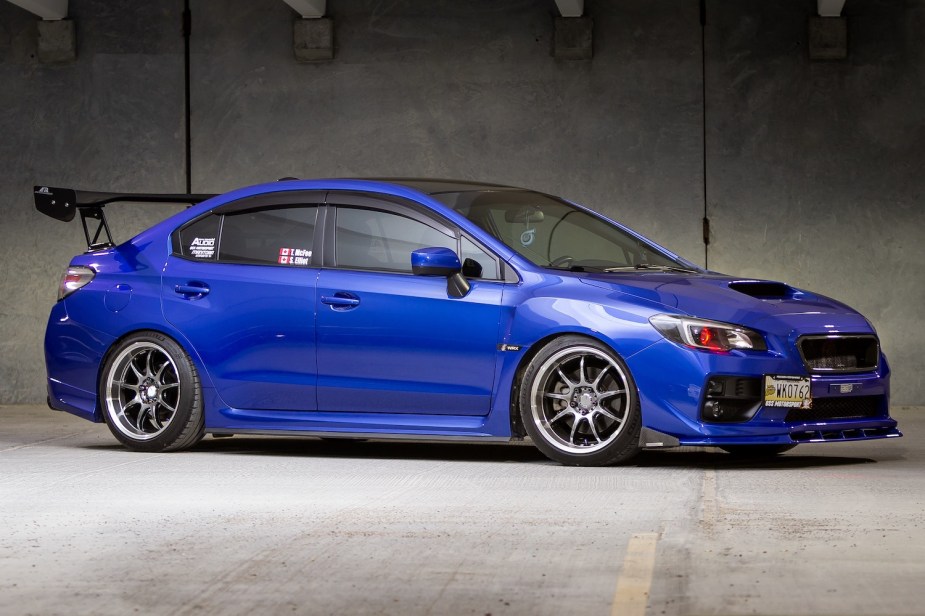
Why Do Some Sportscars Have No Badges?
My mom texted me a picture of a car the other day and asked me, “What’s this? A Porsche?” When I explained she was looking at a Subaru Impreza, she asked why the sportscar had no badges or other markings. The truth is that some owner removed all of its badges. Debadging is usually a purely aesthetic choice but has actually been popular as long as enthusiasts have been customizing cars.
When did debadging cars first become popular?
Modifiers have likely been debadging cars just as long as there have been people modifying cars. But the first widespread debadging was of the lowered “leadsled” cars of the 1940s.

When automotive enthusiasts modified leadsleds and later hot rods, they often had to begin with cars with relatively low build quality. Before repainting their cars, they would smooth out all the body panels, fill out any low spots with a body-filler (such as bondo) and even re-align the panel gaps.
These craftspeople were understandably proud of the clean, sleek lines of their modified car. They often removed trim such as badges to let the perfected car stand on its own. Some went so far as to engineer an alternate location for door handles and trunk buttons.
In this era, debadging was a fairly time-intensive process because all of these badges were attached to holes in the body panels. But these early hot-rodders were already using body-filler and repainting; they had the tools to repair these holes.
Why do people debadge their car?
Often people debadge sports cars and often it is part of a series of modifications. Similar to the leadsleds of yesteryear, these vehicle owners like the lines of their vehicle and want a simpler, cleaner appearance.

In some instances, people debadge a sportscar to create a “sleeper.” This is a vehicle with performance upgrades that looks like a base model and is more likely to win races against unsuspecting rival drivers.
Some car owners claim that car wax can get trapped in badges; they actually remove their badges to make their car easier to clean. This may be true but seems almost like the same amount of work as cleaning around the badge.
According to Jalopnik, it is relatively common for Europeans to request luxury manufacturers remove the badges of their top-end cars because they do not want to flaunt their wealth.
A criminal could conceivably de-badge a common car to make it even more difficult for witnesses to identify. Underground cross-country racers even debadged an Audi S6, then modified it to look like an undercover police car. Check out that Cannonball story here.
Is it difficult to debadge a car?
The difficulty of debadging a car completely depends on the make and model of the car. That said, new cars are often easier to debadge than old cars. This is because their trim is usually held on with adhesives instead of screws through body panels.

Some enthusiasts claim that you can remove most adhesive-secured badges by hand on a hot enough day. The procedure includes: Wait for an 80+ degree day and let your car sit in the sun as long as possible. Next, pour a little Goo Gone adhesive remover along the top of the badge, then try to pry it away from the car. If you can create any gap at all, you’re in business.
Slide a strand of dental floss between the badge and the sheet metal. With a sawing motion, you can likely cut through enough of the adhesive to remove the badge.
The remaining adhesive will form a “shadow” of the original badge. But with a little more Goo Gone, you should be able to scrub it away with a detailing towel.
Next, learn why some sports cars have metal loops on their bumpers or see how to badge a modern car for yourself in the video below:



